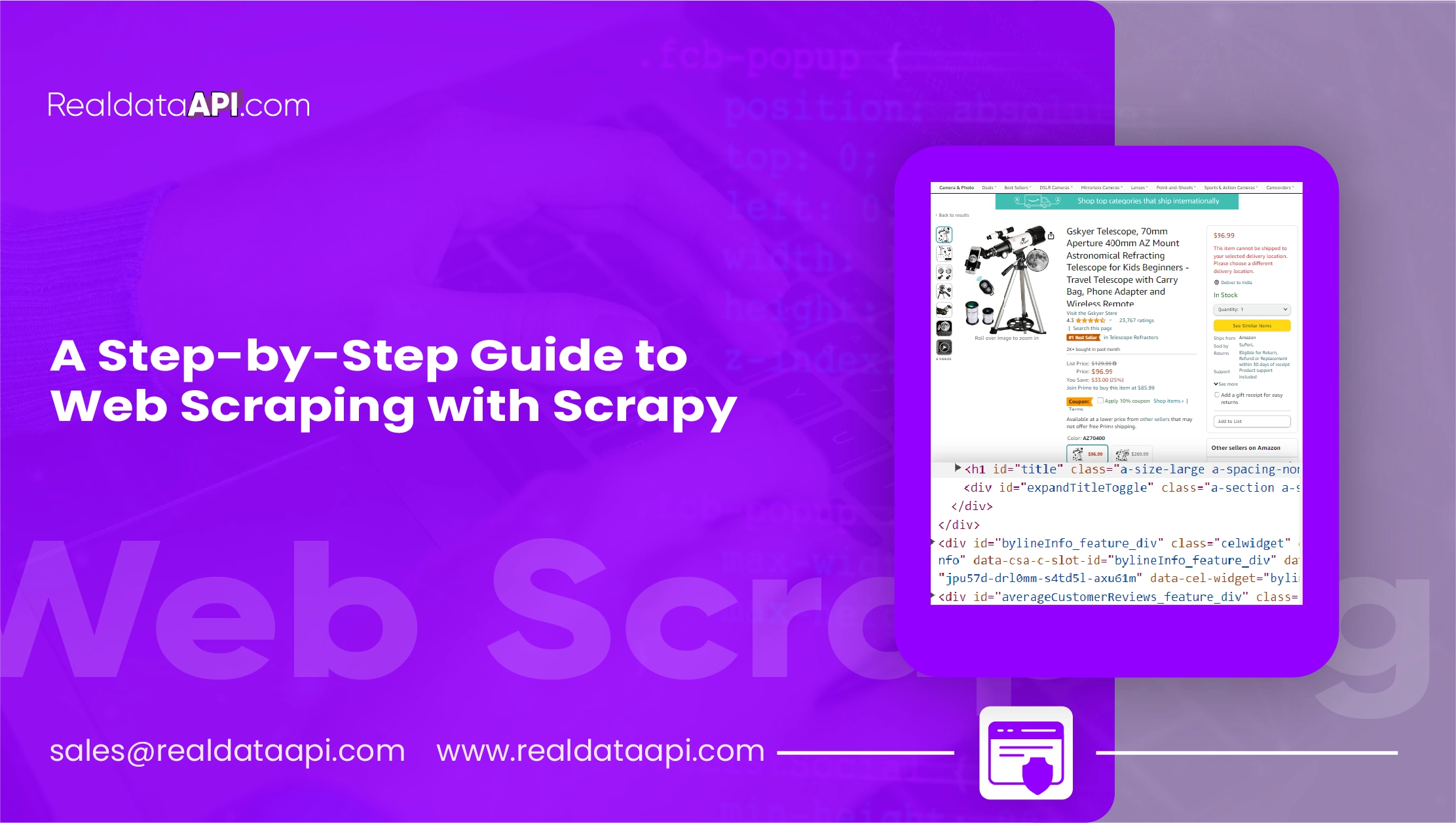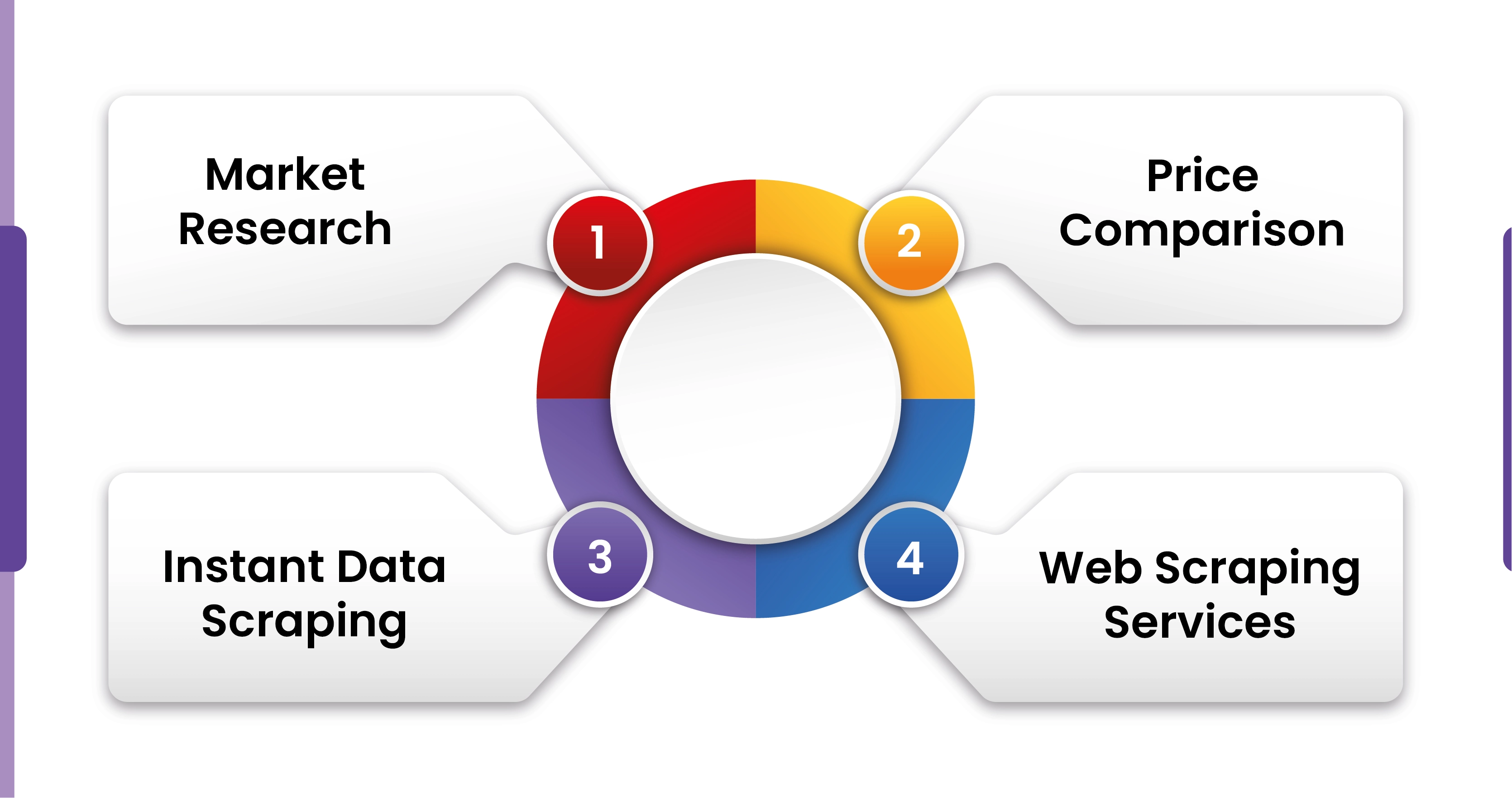.webp)

Introduction
In today's data-driven world, web scraping has become an essential tool for gathering valuable information from the vast expanse of the internet. Scrapy, a powerful web crawling and scraping framework written in Python, provides developers with the tools and flexibility needed to extract Scrapy data from websites efficiently. This comprehensive guide will walk you through the process of web scraping with Scrapy, from installation to data extraction, and explore the various applications and benefits of this versatile tool./p>
Understanding Scrapy: A Powerful Web Scraping Framework

What is Scrapy?
Scrapy stands out as a potent open-source framework for web crawling and scraping, developed in Python. Boasting an extensive array of tools and functionalities, it equips developers to extract data from websites with remarkable efficiency. Its comprehensive toolkit simplifies the process, enabling seamless data extraction. Whether you're aiming to collect information for research, analysis, or business insights, Scrapy offers the versatility and reliability needed to tackle diverse web scraping tasks effectively. With its user-friendly interface and robust capabilities, Scrapy remains a top choice for developers seeking to harness the power of web scraping in their projects. With Scrapy, developers can create Scrapy web data scrapers, also known as spiders, to automate the process of data collection by navigating through web pages, extracting specific information using XPath or CSS selectors, and storing the scraped data in structured formats such as JSON, CSV, or a database. Scrapy is widely used for various applications, including web scraping, data mining, search engine indexing, and more.
Getting Started with Scrapy
Installation
To begin using Scrapy, you'll first need to install it on your system. Scrapy can be installed via pip, Python's package manager, using the following command:
pip install scrapyCreating a Scrapy Project
Once Scrapy is installed, you can create a new Scrapy project using the scrapy startproject command. This command creates a new directory with the necessary files and structure for your project.
scrapy startproject myprojectDefining Spider
Spiders are the core component of Scrapy that define how to extract Scrapy data from websites. You can create a new spider using the scrapy genspider command and specify the website you want to scrape.
scrapy genspider myspider example.comWriting XPath or CSS Selectors
To extract data from web pages, you'll need to specify the location of the desired elements using XPath or CSS selectors. These selectors allow Scrapy to locate and extract specific pieces of information from the HTML structure of a webpage.
Extracting Data with Scrapy
Parsing HTML
Once you've defined your spider and specified the selectors, you can implement the parsing logic to extract the desired data from the HTML response. Scrapy provides methods for parsing HTML documents and extracting data based on the specified selectors.
Storing Data
After extracting the data, you'll typically want to store it in a structured format such as CSV, JSON, or a database. Scrapy provides built-in support to store scrape Scrapy data in Python using pipelines, which allow you to process and store items as they are scraped.
Applications of Scrapy: Unlocking the Potential

FoScrapy, with its versatility and robust features, unlocks a myriad of possibilities for data extraction and automation. Let's explore some of the key applications of Scrapy and how it can be leveraged to unlock the potential in various domains.
Market Research
Scrapy is a valuable tool for conducting market research by scraping data from diverse sources on the web. Businesses can gather insights into market trends, competitor strategies, and consumer preferences by extracting data from relevant websites. By analyzing this data, businesses can make informed decisions, develop effective marketing strategies, and stay ahead of the competition.
Price Comparison
In the competitive landscape of e-commerce, price comparison is crucial for both businesses and consumers. Scrapy enables businesses to scrape Scrapy data in Python from multiple retailers' websites, allowing them to analyze price differentials, identify opportunities for cost optimization, and adjust pricing strategies accordingly. Consumers can also benefit from price comparison websites built using Scrapy, helping them find the best deals and make informed purchasing decisions.
Instant Data Scraping
With its scalable architecture and efficient processing capabilities, Scrapy is ideal for instant data scraping tasks that require real-time data retrieval. Whether it's monitoring news websites for updates, tracking social media mentions, or scraping stock market data, Scrapy can handle the task with ease. Businesses can use instant data scraping to stay updated on relevant information and make timely decisions based on real-time data insights.
Web Scraping Services
Scrapy can be utilized to provide web scraping services to clients, offering custom data extraction solutions tailored to their specific requirements. Businesses can leverage Scrapy's flexibility and extensibility to build sophisticated instant data scrapers that meet the diverse needs of clients across industries. From data aggregation and analysis to content extraction and monitoring, Scrapy-based web scraping services empower businesses to unlock valuable insights from the web.
Scrapy offers a wide range of applications, including market research, price comparison, instant data scraping, and web scraping services. By harnessing the power of Scrapy, businesses can unlock new opportunities for growth, innovation, and data-driven decision-making in today's digital age.
Conclusion
Web scraping with Scrapy opens up a world of possibilities for gathering and analyzing data from the web. From market research and price comparison to instant data scraping and web scraping services, Scrapy offers a versatile toolkit for extracting valuable insights from websites. By following this step-by-step guide and exploring the various applications of Scrapy, you can unlock new opportunities for growth and innovation in your business.
Real Data API is your gateway to a wealth of structured data, whether you're a developer crafting bespoke solutions or a business leveraging insights for strategic decisions. Offering a comprehensive suite of tools and capabilities, Real Data API empowers you to navigate the dynamic landscape of data retrieval with ease. Seamlessly integrate Real Data API into your workflows to access, analyze, and utilize data efficiently. Whether for market research, competitive analysis, or trend identification, Real Data API provides the robust infrastructure you need to drive your data-driven initiatives forward. Harness the power of Real Data API to unlock actionable insights and stay ahead in your industry!













